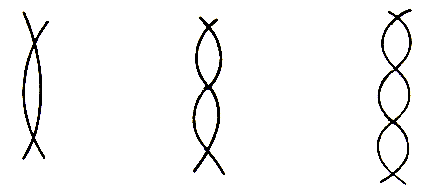


| Title: | Location | K-4 | 5-8 | 9-12 | Description | Discipline |
| Percussion Strikes | SoundGarden | How do percussion instruments make sound? |
Percussion instruments are among the most ancient kinds of instruments. It's believed that our earliest human ancestors used percussion instruments to play rhythms for ceremonial purposes, communication, and enjoyment. Percussion instruments include hand claps, snare drum, timpani, cymbals, bass drum, tambourine, cow bell, tom tom, agogo, gong, and vibraphone (just to name a few).
Percussion instruments are made out of just about any material; wood, metal, glass, ceramic, or animal bones and teeth. To make percussion instruments sound, you usually strike them with a stick, mallet, or your hand to make them vibrate.
Name That Instrument!
Let's play a quick game called Name That Instrument! Can you tell what kind of wind instrument is being played? Can you tell how it makes a sound?
Now let's try a quick experiment. What do you think will happen if we play all three instruments together? Will it sound like noise? music? sound? Write down your predictions in your Journal and then listen to the except below:
How did your predictions hold up to what you heard? How would you describe the relationship between noise, sound, and music now?
How does a percussion instrument make a sound?
There are many ways to make a piece of wood, metal, glass, or ceramic vibrate. You can:
- - strike it with a stick (snare drum) or mallet (vibraphone)
- - shake it, causing objects inside to strike the shell (shaker, maracas)
- - strike it with your hand (tambourine).
How many other ways can you think of to make a percussion instrument make a sound?

What happens when a vibraphone bar vibrates?
A vibraphone bar vibrates in halves, thirds, fourths, fifths, and so on to create a clear metallic tone. But it also vibrates in other ratios that aren't whole numbers. This mode of vibration is called nonharmonic or nonperiodic and is also associated with noise (for example a car horn, rain drops, or a sneeze, etc.).
How do you define noise? What's your definition for musical sound?
What's the Point?
Every instrument has three parts that combine to create its sound. Though we use some fancy words to desribe these parts, they're really quite simple:
The Primary Vibrator is the part that creates the sound. In a snare drum it's the membrane stretched across the metal frame, in the shaker it's the outer shell, and in a vibraphone it's the metal bars.
The Resonant Vibrator is the part that makes the sound louder through a process called resonance. In a snare drum it's the metal case, in a shaker it's the wooden or metal shell, and in a vibraphone it's the hollow tubes underneath.
The Sound Effuser is the part that focuses and helps to project the sound toward the audience. With percussion instruments, their sound tends to be so clear and unique that they don't require an effuser.
Hands-On Activity – Make your own Percussion Thing!

Materials needed:
- two sets of plastic cups of equal size (4)
- macaroni
- masking tape
- decorations
To Do:
- Fill the bottom of the first cup with an inch or two of macaroni.
- Place the second cup on top.
- Use a piece of masking tape to connect the two cups together.
- Decorate your Percussion Thing. Make it look like something that represents some aspect of your personality.
- Repeat steps 1-4 with the other set of cups to create a second Percussion Thing.
- Now you're ready for some experiments!
Try This
TIP: when performing your tests make sure that you conduct a "fair test" by changing just one thing at a time. This way you will always be able to tell the result. Record your results in your journal so you can compare them.
How many different ways can you make a sound?
How many different ways can you make high and low pitches?
How can you make loud and soft sounds?
Try holding your shaker different ways and shaking it. Which way sounds best to you?
Percussion Thing Journal Reflections
- which part is the Primary Vibrator? Why?
- which part is the Resonant Vibrator? Why?
- which part is the Sound Effuser? Why?
- How is pitch effected by the different-sized cups?
- How is loudness effected by the different-sized cups?
- What other things might effect the pitch of your Percussion Thing? (for example, bigger or smaller macaroni, etc.)?
Just for Fun!
Can you create a simple melody? Can you sing or whistle along with it?
Can you create a simple rhythm? Can you sing or hum along with it?
Can you make up a set of lyrics for your song or rhythm?
"But hark! my pulse like a soft drum
Beats my approach, tells thee I come."
– Henry King
Send your comments to: webteam@cafemuse.com
© 1996 – 2015 NewWorldView, All Rights Reserved.